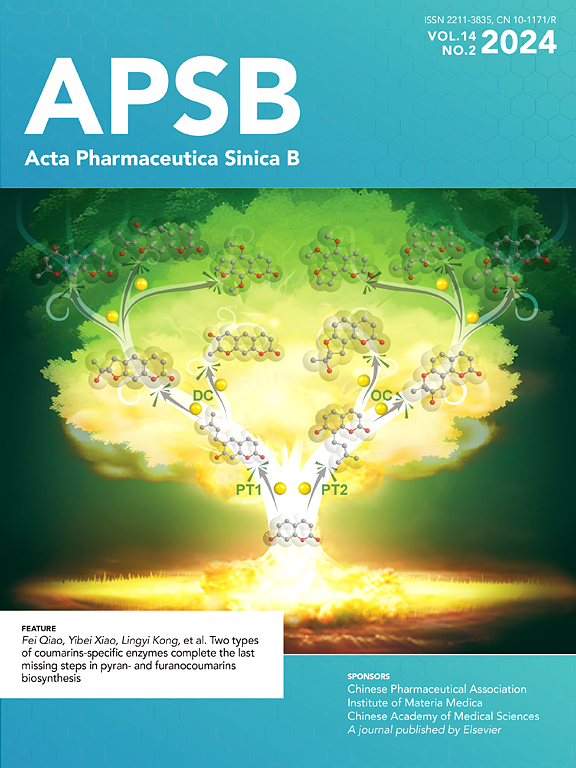Advances in research on biomaterials and stem cell/exosome-based strategies in the treatment of traumatic brain injury
IF 14.6
1区 医学
Q1 PHARMACOLOGY & PHARMACY
引用次数: 0
Abstract
Traumatic brain injury (TBI) is intricately linked to the most severe clinical manifestations of brain damage. It encompasses dynamic pathological mechanisms, including hemodynamic disorders, excitotoxic injury, oxidative stress, mitochondrial dysfunction, inflammation, and neuronal death. This review provides a comprehensive analysis and summary of biomaterial-based tissue engineering scaffolds and nano-drug delivery systems. As an example of functionalized biomaterials, nano-drug delivery systems alter the pharmacokinetic properties of drugs. They provide multiple targeting strategies relying on factors such as morphology and scale, magnetic fields, pH, photosensitivity, and enzymes to facilitate the transport of therapeutics across the blood–brain barrier and to promote selective accumulation at the injury site. Furthermore, therapeutic agents can be incorporated into bioscaffolds to interact with the biochemical and biophysical environment of the brain. Bioscaffolds can mimic the extracellular matrix environment, regulate cellular interactions, and increase the effectiveness of local treatments following surgical interventions. Additionally, stem cell-based and exosome-dominated extracellular vesicle carriers exhibit high bioreactivity and low immunogenicity and can be used to design therapeutic agents with high bioactivity. This review also examines the utilization of endogenous bioactive materials in the treatment of TBI.

生物材料及干细胞/外泌体治疗外伤性脑损伤的研究进展
创伤性脑损伤(TBI)与最严重的脑损伤临床表现有着复杂的联系。它包括动态病理机制,包括血液动力学障碍、兴奋性毒性损伤、氧化应激、线粒体功能障碍、炎症和神经元死亡。本文对基于生物材料的组织工程支架和纳米给药系统进行了全面的分析和总结。作为功能化生物材料的一个例子,纳米药物传递系统改变了药物的药代动力学特性。它们提供了多种靶向策略,依赖于诸如形态和规模、磁场、pH值、光敏性和酶等因素,以促进治疗药物通过血脑屏障的运输,并促进损伤部位的选择性积累。此外,治疗剂可以加入到生物支架中,与大脑的生化和生物物理环境相互作用。生物支架可以模拟细胞外基质环境,调节细胞相互作用,提高手术干预后局部治疗的有效性。此外,基于干细胞和外泌体主导的细胞外囊泡载体具有高生物反应性和低免疫原性,可用于设计具有高生物活性的治疗剂。本文还综述了内源性生物活性物质在创伤性脑损伤治疗中的应用。
本文章由计算机程序翻译,如有差异,请以英文原文为准。
求助全文
约1分钟内获得全文
求助全文
来源期刊

Acta Pharmaceutica Sinica. B
Pharmacology, Toxicology and Pharmaceutics-General Pharmacology, Toxicology and Pharmaceutics
CiteScore
22.40
自引率
5.50%
发文量
1051
审稿时长
19 weeks
期刊介绍:
The Journal of the Institute of Materia Medica, Chinese Academy of Medical Sciences, and the Chinese Pharmaceutical Association oversees the peer review process for Acta Pharmaceutica Sinica. B (APSB).
Published monthly in English, APSB is dedicated to disseminating significant original research articles, rapid communications, and high-quality reviews that highlight recent advances across various pharmaceutical sciences domains. These encompass pharmacology, pharmaceutics, medicinal chemistry, natural products, pharmacognosy, pharmaceutical analysis, and pharmacokinetics.
A part of the Acta Pharmaceutica Sinica series, established in 1953 and indexed in prominent databases like Chemical Abstracts, Index Medicus, SciFinder Scholar, Biological Abstracts, International Pharmaceutical Abstracts, Cambridge Scientific Abstracts, and Current Bibliography on Science and Technology, APSB is sponsored by the Institute of Materia Medica, Chinese Academy of Medical Sciences, and the Chinese Pharmaceutical Association. Its production and hosting are facilitated by Elsevier B.V. This collaborative effort ensures APSB's commitment to delivering valuable contributions to the pharmaceutical sciences community.
 求助内容:
求助内容: 应助结果提醒方式:
应助结果提醒方式:


